(Continued from the previous issue. . .)
Swamiji’s last public lecture and the man who captured it
The public lecture—the only one on record that Swamiji gave in Shillong—was delivered at the famous Quinton Memorial Hall on April 27, 1901. Rai Saheb Kailash Chandra Das, Swamiji’s host, was the secretary of the Quinton Memorial Hall Committee. A day or two after Swamiji’s arrival, the Rai Saheb and other prominent citizens expressed their wish to have Swamiji give a public discourse on religion. Swamiji said, ‘What’s the need for a public meeting? We are already having these nice parlor talks every day. Moreover, considering my physical condition, will your Civil Surgeon or the Chief Commissioner give permission to have such a public meeting involving me?’ The group said that they had already talked to Sir Henry about it, and that he was even willing to chair the meeting. They assured him that the meeting would only be scheduled depending on the prognosis of Swamiji’s health condition.23
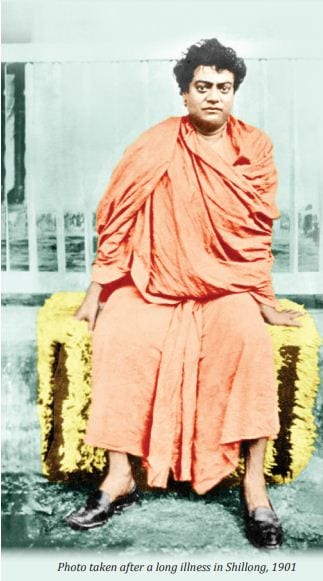
Swamiji’s only lecture at Shillong was not reported by any local Bengali or English newspapers (daily, weekly, or monthly), and it is doubtful if one in either language was extant at that time. It was not until 1935 that the Shillong Mail came into being. It was also Swamiji’s last public lecture, and that is why it is so important. But the May 1901 edition of a Khasi monthly magazine, U Khasi Mynta (The Khasi Today), reported on the lecture, which was delivered to a packed audience; some of the people had to stand outside for want of space. The report was probably written, or at least edited, by Hormurai Diengdoh, a prominent Khasi journalist who brought out, in 1895-96, the first Khasi monthly magazine that was secular in nature. It was translated by Swami Gokulananda and appeared in The Vedanta Kesari in 1998.
It is amazing that it took nearly one hundred years for the lecture, given in English, to be published in English, and that too from a Khasi source! According to the Khasi magazine report, the subject of Swamiji’s speech was ‘The Faith of Orthodox Hinduism,’ although the speech had very little to do with either orthodoxy or Hinduism as such, except for some reference to the Vedas. An excerpt of the report from The Vedanta Kesari is quoted below:
He [Swami Vivekananda] began by saying that any religion without a sacred book cannot stand the test of time. As examples of his thesis he cited the religions of the Romans, the Greeks and others. Though their religions were based on knowledge and discipline, in the long run they could not survive, for they had no sacred books. But when people have sacred books of their religion, even though they might go astray like the Jews, their religion or faith can never die. It is the same with the Hindus, he said. Even they are very much misguided by those manmade multifarious teachings. But so long as their Gospel, the Vedas, remain, there is hope.
In his speech Swami Vivekananda laid stress on the fact that religious ceremonies without deeds are worth nothing. A man who does something, who performs something, although he might commit crimes, is better than a man who does nothing or performs nothing, for the slothful or undutiful are not different from a tree or a bull. He quoted and recited stanzas from the Vedas in Sanskrit and then translated them into English. He preached at length for the betterment of the fellow human beings. He divided the good deeds of human beings into three categories—first is to give alms, to help the physical body with food and clothing; the second is to give training or knowledge, like teaching in a school; and the third is to show the human soul the way to Godrealization. He stressed this last category as the most important. For this, he said men like the Brahmins must be respected, for they are the preachers of the soul.
He exhorted man to enlighten his fellow human beings and help them. Those who could afford to go to school should be provided with facilities to learn extensively, but those who could not, should at least learn the alphabet. He has done a good thing and he must be praised and blessed. He concluded by saying, ‘Our work in India now is to open the eyes of the people.’
From all his speeches and the stanzas that he quoted and recited from the Vedas, one can understand that he considers all human beings in the world as one. None is to be looked down as a low caste Hindu. He said that the Vedas exhort that we should preach to the people the truth. Probably, it is for this reason that he had travelled throughout the world and preached.24
Swami Alokananda analyzed the speech and came up with some salient points that Swamiji had emphasized: religion is realization; to serve humanity is the highest religion; national progress depends on expansion of education; self-manifestation is the true indicator of one’s humanity; it is important to link spiritual lessons with vocational education and training.25
Since the public meeting was organized under the leadership of the Chief Commissioner, and he was in the audience, it must have been attended by the local elites, both British and Indian. The report said, ‘…on the night of 27th April 1901, he fell ill while he was delivering the speech, and has not fully recovered even now.’ Swamiji was already seriously ill then, and the strain of giving the lecture probably took its further toll.
It is uncertain exactly when Hormurai Diengdoh met Swamiji personally and had discussions with him on religious topics. It could have happened in the days before his lecture, or afterwards, probably the latter. Arpita Sen gave a concise account of one of those discussions as follows (using Shillonger Bangalee as her source):
… Diengdoh met him and expressed his unhappiness about the way the Welsh missionaries were condemning the followers of Khasi indigenous religion as animists and heathens. Swamiji laughingly retorted that the Absolute Soul was manifested in all creations of God and those who believed in this concept and worshipped mountains, trees and rivers were at the same time worshipping the Supreme Being. In that sense the Khasis were animists. If someone believed in God he could not ignore His creations or Nature. As for heathens, Swamiji was quick to point out that those who were prejudiced towards other religions and regarded only themselves as true believers, called the rest heathens. The word heathen, therefore, was indicative of intolerance and narrow–mindedness.26
It is not clear exactly when and where Prof. Bhattacharya got this information, but the views expressed above would be very typical of Swamiji. Hormurai Diengdoh was a Presbyterian who reverted back to indigenous Khasi religion.27 It is not certain whether he did that before or after meeting Swamiji. However, Swamiji’s speech and subsequent association with him transformed Mr. Diengdoh from a ‘narrow-minded’ Christian to a liberal nationalist. One wonders if Swamiji’s comments at the end was aimed at the Presbyterian missionaries. During one of his meetings with Swamiji, maybe the same or a different one, Mr. Diengdoh narrated the following incident to him:
In 1845, three Khasis approached Mr. Lewis [apparently a missionary] for baptism. When asked if the Saviour would receive such as they, the three men answered, ‘O, yes, He will; why shouldn’t He? Did He not come into the world to die for sinners such as we?’ In 1896 in Wales, John Roberts, the Welsh missionary, gave a lecture followed by thunderous applause when he mentioned that by asking Khasi children to repeat the line, ‘I am a sinner, you are a sinner and we are sinners,’ he was able to convince the Khasi children to embrace Christianity in order to be freed of sins.28
That must have endeared Mr. Diengdoh to Swamiji, because both he and his Master Sri Ramakrishna disliked the doctrine of Original Sin, which is central to Christianity. They always accepted everyone as children of immortality, or children of bliss.
There is an anecdote told by a member of the audience, Birendra Kumar Majumdar, about an incident during Swamiji’s lecture at the Quinton Hall. The pressured paraffin lamp (Petromax) that illuminated the lecture hall momentarily went off, leaving the hall in total darkness. But according to Mr. Majumdar, even in that darkness Swamiji’s image became clearer and clearer and he, as well as others, saw the area where Swamiji was standing become fully illuminated. ‘It was not an [optical] illusion, but a perfectly clear act of seeing. All listeners felt blessed at the heavenly sight. Everyone was captivated by Swamiji’s erudition and sonorous voice,’ wrote Birendra Kumar Majumdar in his reminiscences of that occasion.29
It is entirely possible that what Mr. Majumdar saw was ‘divine illumination,’ literally if not metaphorically. Self-effulgent light of divine glory could produce such illumination, and ‘he who has eyes to see’ will see it; although Swamiji, characteristically, would be the last person to invoke such a mystical interpretation in public. But one will always wonder if Sir Henry Cotton, or the other British officers who were also in the audience, had the same visual experience. That would have shocked them unless there is a simple explanation for what had happened. The newly built hall may have had a stage that was equipped with an alternate method of lighting to handle such an emergency; or the stage may have always been lit with a separate and independent light source, which became progressively visible and prominent when the Petromax malfunctioned and the eyes got used to the dark auditorium. The second explanation is more plausible. The report in The Vedanta Kesari, or in the Khasi article for that matter, didn’t mention this incident.
Ending the trip
Despite all efforts by Sir Henry Cotton and his assigned doctor Major Campbell, Swamiji’s health showed no sign of improvement. As far as we know, there are four photographs of Swamiji taken at Shillong.30 Two of those seem to have been taken in a studio, in front of artificial backdrops; and the other two in natural settings. The latter two rather unflattering photographs reflect his extremely poor health at that time, thus denying us his usual photogenic look.
Shillong and its environs are replete with beautiful eye-catching and awe-inspiring spots, each more picture-perfect than the next. Swamiji’s interest in visiting scenic, historic, and cultural sites is also legendary. He was not the kind of person to stay in bed during the entire time he spent in Shillong, despite his ill health. He gave one lecture that we know of, but there is no available information about his doing any sightseeing or other activities while he was there. But it is conceivable that some prominent Khasi and Bengali residents of Shillong, including editor Diengdoh, visited him to engage him in conversations about religion and important social issues; we have seen some evidence of that already in Swamiji’s reference to ‘parlor talks’.
When did Swamiji leave Shillong then? We simply don’t know. It seems odd that Prof. Bhattacharya, who devoted three pages in his article giving a vivid description of Swamiji’s trip from Gauhati to Shillong, had nothing to say about when he left, or about his trip back to Gauhati; he just said, ‘He returned to Belur Math on May 12.’31
Since there is no credible information on that, we have no other recourse but to work progressively backwards from the date Swamiji reached Calcutta (Belur Math), which was May 12, and then settle on a date of departure that seems logical. It took one day by train from Goalundo to Calcutta, about three days to reach Goalundo from Gauhati by steamer,* with no stops en route, and two days to reach Gauhati from Shillong, this time downhill; which means he stayed at Shillong for two weeks and left on May 6. This date presupposes that he spent some time in Gauhati on his way back; there are indications that he met Padmanath there again.32
The two sites: where Swamiji stayed and where he spoke
Unfortunately, we know of only two sites within Shillong where Swamiji’s footprints can be traced with any degree of certainty: where he lived and where he lectured. Sister Gargi (Marie Louise Burke) once wrote about Swamiji:
There is no detail of his [Swamiji’s] action too small to record, no whiff of his thought too inconsequential to ponder over, perhaps to write tomes about. If he spoke to some fortunate man or woman for five minutes, we want to know the biography of that person; if he entered a building, we want to know its architecture and its history.33

We have met Sir Henry Cotton and Hormurai Diengdoh earlier; very little is known about the others Swamiji met in Shillong. Now we would like to know a little more about the house that Swamiji stayed in and the hall where he lectured. The house was originally constructed using hay for the roof (Photo 1), which was later developed into an Assam-type cottage, replacing the thatched roof with corrugated tin (Photo 2). (The left and right sides of the house are shown respectively in Photos 3 and 4, in p.31) The front verandah was enclosed to transform it to a foyer or a parlor.34
It is not known exactly when the renovation took place. If the house had been damaged during the June 1897 earthquake like many other buildings and houses in Shillong, it could have acquired the new look before Swamiji reached there. On the other hand, the backgrounds in the two photographs of Swamiji, which were presumably taken at the house because of his poor health, do not indicate that those were taken at the renovated house. The said photographs could have been taken on the left side of the old house, which probably had a verandah with wooden railing that was later covered with an asbestos roof and the house extended in width (see Photo 3 in p.31).
In 1943, the owner sold the house to two zamindar (land owner) brothers, Nagendranath and Dhirendranath Chowdhury, from then Sunamganj sub-division in the district of Sylhet (now in Bangladesh).35 Based on the name of their native village Gourarang in Sunamganj, the new owners named the house ‘Gourarang Lodge,’ and that was the name by which the local Laban residents identified the house.36 (Nagendranath’s native house in Sunamganj, the ‘Gourarong Zamindar Bari’, where he lived until the liberation of Bangladesh in 1971, is now one of the top tourist spots in the area.) In 1963 or thereabouts, the Shillong Ramakrishna Mission constructed a stone memorial in front of the house that has the following inscription (see Photo 5):
ARISE AWAKE AND STOP NOT
TILL THE GOAL IS REACHED
HERE LIVED
SWAMI VIVEKANANDA
IN APRIL 1901
CENTENARY 1963-64

It seems that the descendants of the Chowdhurys lived in that house until around 1997, when the house was sold to a Khasi gentleman. The Ramakrishna Mission was not successful in its attempt to acquire the property. The new owner allowed some of the old residents to live in part of the house, with a plan to eventually demolish the house and build a new one in its place.37 Photographs of the house that were taken by the author in 1998 show the house in a dilapidated condition, with broken window panes and damaged walls.
In 2012, the Ramakrishna Mission Shillong tried to get the Meghalaya government to declare the house, or the ground it once stood on, a heritage site. A Times of India report says:
Speaking at a press conference at the Shillong Press Club on Tuesday [April 24, 2012], he [Swami Achyuteshananda, then secretary of the Shillong Ramakrishna Mission] added: ‘The Mission is prepared to extend all help to the Meghalaya government if it takes steps to declare it as a heritage spot,’ he said. He also said that if the government wanted, it could take possession of the house [site], even as he informed that a property dispute regarding the site was being sorted out in the courts. ‘The litigation is now in a better position,’ he said.38
The plan did not work out unfortunately; the structure had already deteriorated progressively and slowly disappeared from sight by 2006—a paradise lost.39 Only the stone memorial remains as a lasting tribute to Swami Vivekananda and a reminder of his visit to Shillong.
Quinton Hall, or Quinton Memorial Hall, where Swamiji gave his last public lecture, is located on Quinton Road in the Police Bazar area of Shillong. It was built in 1892, and was named after Mr. James Wallace Quinton, the former Chief Commissioner of undivided Assam from 1889 to 1891. It was severely damaged during the Assam earthquake of 1897, and its repair and restoration were completed in April 1901. Swamiji was at Shillong just in time to deliver the inaugural lecture on April 27 in the newly renovated Quinton Hall. Since then, the hall has been the prime venue at Shillong for staging cultural and other civic functions. Many eminent personalities have graced the hall with their speeches, including Swami Abhedananda, Rabindranath Tagore, Annie Besant, Acharya Prafulla Chandra Roy, and Netaji Subhash Chandra Bose, to name a few.40
In 1993, a little over one hundred years after it was built, the building was acquired by the Ramakrishna Mission and converted into an educational-cum-cultural center (Photo 6). It has a computerized library, a meditation hall, an auditorium, and a free coaching center for school students. A full-size statue of Swami Vivekananda adorns the front yard of the Ramakrishna Mission Vivekananda Cultural Centre (RKMVCC). The statue was unveiled on January 12, 2006, by M. M. Jacob, the then governor of Meghalaya, to commemorate Swamiji’s historic last public speech.41

Vedanta societies (essentially the faces of the Ramakrishna Mission outside India) sprouted in the West after Swamiji’s visit. Some he founded himself, and some were founded later. In India, after establishing the Ramakrishna Mission organisation in Calcutta in 1897, Swamiji let others pick up the mantle and start branches throughout the nation. Following that tradition, the idea of having a branch of the Ramakrishna Mission in Shillong was first conceived by Swami Prabhananda (Ketaki Maharaj) in 1929, followed by the construction of its first building at the present Laitumkhrah site and its simultaneous affiliation with Belur Math in 1937. Swami Bhuteshananda was appointed the first secretary of the branch center. Due to exceptional leadership then and in the following years, its growth has never slowed down since its inception. Two of its leaders, Swamis Bhuteshananda and Gahanananda, went on to become presidents of the Ramakrishna Order; no other distant branch center can claim this distinction. At present, it runs a hostel for tribal boys, a library, a charitable dispensary and a mobile medical unit from the same location; and there is, of course, the RKMVCC.
The cruel wheels of time that ran over the house where Swamiji stayed in Shillong could not dampen the spirit of the people of Meghalaya, or even of Assam. On April 23, 2013, one hundred and twelve years after Swamiji’s visit, and celebrating his 150th Birth Anniversary, a procession called ‘Vivek Rath’ started from Dhubri (where he first landed in Assam). It passed through Gauripur, Bilasipara, Chapar, Goalpara, Krishnai, Dudhnai, Boko [Kamakhya], Guwahati, Jorabat, Nongpoh, and Umsning, and finally reached the site of the Laban house in Shillong on April 26.42 The stone memorial served as the guiding beacon of remembrance.
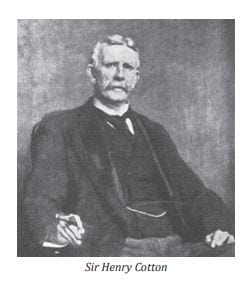
The significance of this specific route was that Swamiji had touched some of those places in 1901 when he ultimately arrived in Shillong. The first town he touched in Assam was Dhubri, and from there he could have travelled to Kamakhya partly on land and partly on water; the exact sequence is not known. Among those towns, he probably stayed overnight in Dhubri, Goalpara, Kamakhya, and Gauhati. On April 27 (2013) morning, thousands of people from different parts of the state and country who converged at the Laban house site then marched to the RKMVCC (the renovated old Quinton Hall) where several dignitaries gave lectures on Swamiji and his message.43 Swami Prabhananda (Barun Maharaj), Vice president of the Ramakrishna Math and Ramakrishna Mission, was present at the celebration, along with the then secretary of the Shillong Ramakrishna Mission, Swami Achyuteshananda.
Concluding remarks
Swamiji and his party left Shillong on May 6 and were at Belur Math on May 12. Visiting East Bengal and Assam was the last of his public tours on which he delivered lectures. After his return, Swamiji paid tribute to both Sir Henry Cotton and Shillong: ‘The Shillong hills are very beautiful. There I met Sir Henry Cotton, the Chief Commissioner of Assam. He asked me, “Swamiji, after travelling through Europe and America, what have you come to see here in these distant hills?” Such a good and kind-hearted man as Sir Henry Cotton is rarely found.44’ In another instance he said, ‘In a monk’s life taking pilgrimages is their duty. And so I came to Shillong via Kamakhya. Moreover, in a place where there is a person like Henry Cotton that place itself becomes a pilgrimage. Cotton is a person who understands India’s problems very well and wants its betterment.’45
Regarding Assam, Swamiji wrote to Christine Greenstidel, ‘For combined mountain and water scenery this part of the country [Assam] is unrivalled.’46 Even nearly two months after his return from the ‘distant hills’, he was still praising the place, as he wrote to Mary Hale on July 5, ‘Assam is, next to Kashmir, the most beautiful country in India, but very unhealthy. The huge Brahmaputra winding in and out of mountains and hills, studded with islands, is of course worth one’s while to see.’47
Unrivalled in both beauty and unhealthiness was Swamiji’s characterization of Assam (Shillong). He gave a detailed analysis of his multiple afflictions in a letter to Josephine MacLeod: ‘At Shillong—the hill sanatorium of Assam [a little sarcasm here]—I had fever, asthma, increase of albumen, and my body swelled almost twice its normal size. These symptoms subsided, however, as soon as I reached the Math.’48 Nobody had told Swamiji that Shillong is not a place for asthma patients to visit; its high altitude and dampness may further aggravate an already existing breathing problem. He realized that later, and wrote to Christine Greenstidel in September, after visiting Darjeeling and getting sick there too: ‘Within the last few months, I got two fits [of asthma and other ailments] by going to two of the dampest hill stations in Bengal—Shillong and Darjeeling. I am not going to try the Bengalee mountains anymore.’49 He never went back on his word.
(The author is deeply indebted to Sri Pronab Goswami of Advaita Ashrama, Kolkata, for providing him with some important sources for this article.)
(Concluded)
References
23) ‘Shillong Pahare Swami Vivekananda.’ Shyamadas Bhattacharya. Shillonger Bangalee. Kolkata: Patra Bharati, 2004, pp. 40-41.
24) ‘Swami Vivekananda in Shillong’. The Vedanta Kesari. January 1998, pp. 26-27
25) ‘Swami Vivekananda in Northeast India and Present Bangladesh’. Swami Alokananda. Diamond Jubilee commemoration Souvenir 1937-1997, Ramakrishna Mission, Shillong, p. 42.
26) ‘The Missionary among the Khasis.’ Arpita Sen. Mapping the Path to Maturity—A Connected History of Bengal and the North-East, edited by Bipasha Raha and Subhayu Chattapadhyay. New Yord: Routledge, 2018, pp. 165-166.
27) Ibid, p. 164.
28) Ibid., p. 151.
29) ‘One-Hundred-year Celebration of Swami Vivekananda’s Travel to Guwahati and Shillong,’ Dr. Bani Bhattacharjee Udbodhan. August 2001, p. 549.
30) Vivekananda—A Biography in Pictures. Kolkata: Advaita Ashrama. 1993, pp. 98-99.
31) Shyamadas Bhattacharya, op. cit., p. 43.
32) http://bhattacharyasofsylhet.blogspot. com/2009/04/.
33) ‘Foreword’ by Sister Gargi. Swami Vivekananda in Chicago—New Findings. Asim Chauthuri. Kolkata: Advaita Ashrama, 2000, pp. 13-14.
34) Swami Alokananda, op. cit., p. 40.
35) Ibid.
36) ‘Shillong Theke Hariye Jacche Swami Vivekanander Smriti’ [Swami Vivekananda’s Memory Is Disappearing from Shillong] Debashish Choudhury. Udayan, September 1, 2000, p. 14.
37) Ibid.
38) https://timesofindia.indiatimes.com/city/guwahati/ Heritage-tag-sought-for-Vivekanandas-Shillonghouse/articleshow/12867726.cms.
39) The Shillong Times, April 28, 2006.
40) http://www.rkmshillong.org/historyRkm.html
41) http://www.rkmshillong.org/themaking.html
42) ‘Vivek Rath arrives at Pine City, Finally’, Manosh Das TNN, April 27, 2013; https://timesofindia.indiatimes. com/city/guwahati/Vivek-Rath-arrives-in-Pine-Cityfinally/articleshow/19746863.cms.
43) Ibid.
44) The Complete Works of Swami Vivekananda.[hereafter CW] 7:209
45) Rajiv Roy, op. cit.; Swami Alokananda, op. cit., p. 40.
46) CW. 9:157.
47) CW. 5:165-166.
48) CW. 5:162.
49) CW. 9:163.
Source : Vedanta Kesari, May, 2019


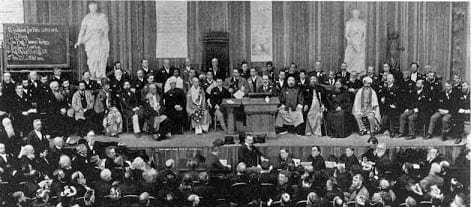

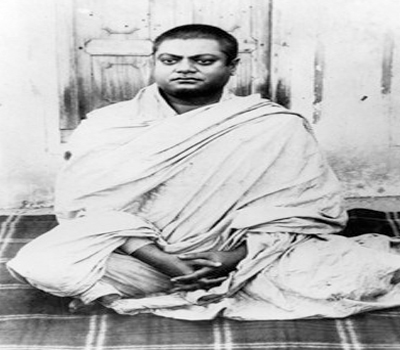
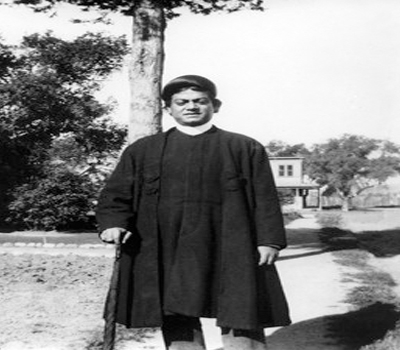
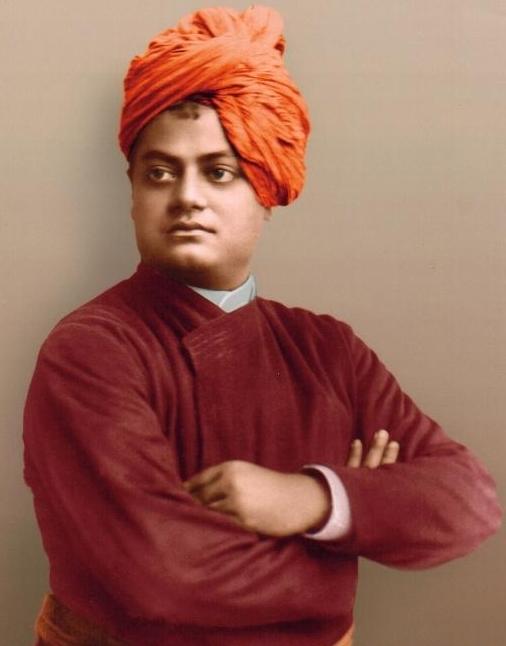
Leave A Comment